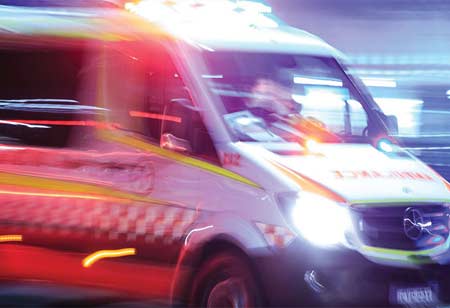Thank you for Subscribing to Healthcare Business Review Weekly Brief

Patient-Centered Evolution of Medical Transport
Healthcare Business Review
John (J.J.) MacIsaac MEd, B Tech, Advanced Care Paramedic, is the Nova Scotia Health Emergency Preparedness Manager—Projects and Planning. He previously worked for over 25 years as an Advanced Care Paramedic in the Emergency Health Services System for the province of Nova Scotia. In addition to his role with Nova Scotia Health, J.J. serves as the Director of Professional Development for the International Association of Emergency Managers (IAEM)— Canada Council.
Through this article MacIsaac talks about the evolution of medical transport systems. He contrasts the early days of simple transportation with the current sophisticated approach that emphasizes patient-specific care, specialized teams and expanded scope of practice for field providers.
I began my paramedic career in the early 1990's at a time when the prehospital system in my home province of Nova Scotia consisted of a variety of ambulance operators, which included those affiliated with funeral homes, taxi companies and the old adage "you call, we haul" epitomized the straightforward approach of medical transport. Historically, this phrase reflected a time when the primary role of emergency medical services (EMS) was to transport patients to the nearest hospital as quickly as possible. However, the healthcare system's technological advancements have rendered this simplistic model obsolete. This culture shift is thanks to many visionaries like Dr. Ron Stewart, a key player in modernizing EMS systems across North America and highly influential globally. Today's medical transport systems embody a more nuanced and sophisticated approach, emphasizing patient-specific care, efficient resource allocation, and innovative treatment modalities.
Medical transport systems have diversified significantly, embracing the value of specialized teams tailored to suit patients' clinical requirements and the importance of ensuring that finite resources are effectively used to support the community. Critical care transport teams, for instance, are equipped with advanced training and resources crucial for patients requiring intensive monitoring and intervention, ensuring they receive the same level of attention during transport as they would in a hospital setting.
Medical Transport Systems Have Diversified Significantly, Embracing The Value Of Specialized Teams Tailored To Suit Patients’ Clinical Requirements And The Importance Of Ensuring That Finite Resources Are Effectively Used To Support The Community
Conversely, there is growing recognition of the need for low-risk transport services for stable patients. Efficient management of non-emergency transport services helps alleviate the burden on emergency systems, ensuring that ambulances and other care resources are reserved for those in need. This stratification of transport services underscores a broader trend in healthcare: prioritizing resource allocation based on patient acuity and necessity.
A significant factor in the modernization of medical transport is the expanded scope of practice for field providers. Paramedics and other community healthcare providers are now trained to perform a wider range of procedures with opportunities to collaborate in making appropriate patient care and disposition decisions. By enhancing the capabilities of field providers, medical transport services can deliver more effective and immediate care, improving patient outcomes and reducing the need for hospital admissions.
In addition to these advancements, integrating virtual care options represents a transformative shift in medical care. Alternate treatment pathways reduce unnecessary transports by enabling patients to receive appropriate care without travelling. For example, patients with chronic conditions can be assessed and managed virtually, with local healthcare teams providing directed interventions guided by specialist clinicians. This approach enhances patient convenience and comfort while ensuring transport resources are available for those in need.
In conclusion, the landscape of medical transport has evolved far beyond the simplistic "you call, we haul" mentality. Modern systems are characterized by specialized teams, an expanded scope of practice for field providers, and the innovative use of virtual care. These advancements ensure patient care is tailored to individual needs, resources are utilized efficiently, and unnecessary transports are minimized. As healthcare evolves, medical transport services must remain adaptive, embracing new technologies and practices to provide the highest standard of care in an ever-changing environment.









